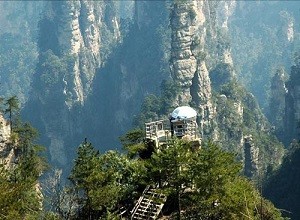China is leading other countries for having the most number of global geoparks in the world, a government official said Wednesday, Jan. 13, the Xinhua News Agency reported.
Guan Fengjun, an official with the Ministry of Land and Resources, told attendees of a training program on geoparks management and development in Beijing that 33 of the world's 120 global geoparks listed by the Global Geoparks Network (GGN) and assisted by the UNESCO are in China.
According to the report, a geopark is an area that protects geological heritage in a sustainable way, while maintaining the economic wellbeing of people in its vicinity. Global geoparks are considered to have greater international significance than national geoparks.
In the 1990s, China launched a campaign to build national geoparks and the government issued a series of laws and regulations in the years that followed, which successfully enhanced their quality and management.
Guan said that there are currently 189 national geoparks in the country, while another 52 have been approved for construction.
"Over the years, geoparks have played a significant role in geology research, protection, economic growth and improving people's livelihoods," Guan said.
China, one of the founding members of the GGN, began applying for global geoparks in 2003.
As of 2007, the Ministry of Land and Resources has designated 138 national geoparks and 33 global geoparks in the country.
The UNESCO has designated the following areas in China as global geoparks:
Danxiashan Geopark
Fangshan Geopark
Funiushan Geopark
Hexigten Geopark
Huangshan Geopark
Jingpohu Geopark
Leiqiong Geopark
Longhushan Geopark
Mount Lushan Geopark
Mount Taishan Geopark
Songshan Geopark
Stone Forest Geopark (Shilin Geopark)
Taining Geopark
Wudalianchi Geopark
Wangwushan-Daimeishan Geopark
Xingwen Geopark
Yandangshan Geopark
Yuntaishan Geopark
Zhangjiajie Sandstone Peak Forest Geopark
Zigong Geopark
For a site to be considered as a geopark and become part of the GGN network, the area must have clearly defined boundaries and a large enough area for it to serve local economic and cultural development (particularly through tourism). Each geopark should display a range of sites of international, regional and national importance, a region's geological history, and the events and processes that formed it. The site must be important from the point of view of science, rarity, education and/or aesthetics.



























